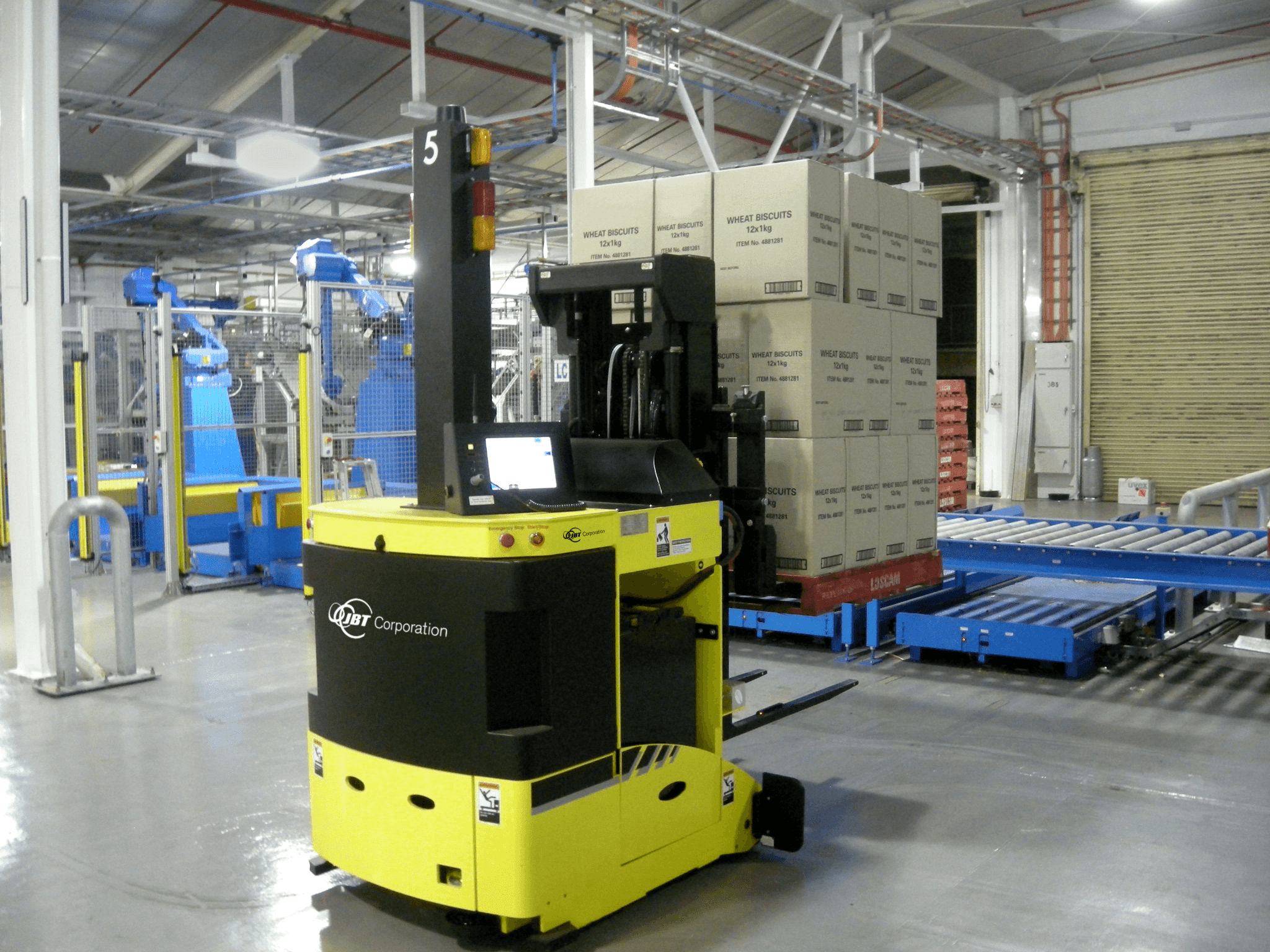Automatic Guided Vehicles (AGV) Information
 Automatic guided vehicles (AGV) are designed to perform their operations without direct human guidance. They are used in a wide variety of industrial applications and can be laser, inertially, or Cartesian-guided. An automatic guided vehicle system (AGVS) consists of one or more computer-controlled wheel based load carriers (normally battery-powered) that runs on the plant floor (or, if outdoors, on a paved area) without the need for an onboard operator or driver.
Automatic guided vehicles (AGV) are designed to perform their operations without direct human guidance. They are used in a wide variety of industrial applications and can be laser, inertially, or Cartesian-guided. An automatic guided vehicle system (AGVS) consists of one or more computer-controlled wheel based load carriers (normally battery-powered) that runs on the plant floor (or, if outdoors, on a paved area) without the need for an onboard operator or driver.
AGVs have defined paths or areas within which or over which they can navigate. Navigation is achieved by any one of several means, including:
- following a path defined by buried inductive wires
- surface mounted magnetic or optical strips
- inertial or laser guidance
Types of Automatic Guided Vehicles (AGV)
There are three main types of automatic guided vehicles, aside from custom or proprietary styles: unit load, forklift, and tugger.
Unit load automatic guided vehicles are powered, wheel-based transport vehicles that carry a discrete load, such as an individual item (e.g., a large roll of paper, coil of steel, or automobile engine) or items contained on a pallet or in a tote or similar temporary storage medium.
Forklift automatic guided vehicles are used to transport pallets. Typical configurations include counterbalanced, narrow-aisle straddle, and side loading versions. Many styles have sensors on their forks (e.g., infrared sensors) for pallet interfacing.
Tugger automatic guided vehicles are powered, wheel-based transport vehicles that are capable of pulling one or more non-powered vehicles (with loads) behind it in a train.
Features
In general, AGVs use one of two methods for guidance: Fixed path, where a physical guide path (e.g., wire, tape, paint) on the floor is used for guidance. Free-ranging AGVs have no physical guide path, thus, it is easier to change vehicle path (in software), but absolute position estimates (e.g., from lasers) are needed to correct dead-reckoning error.
Specifications
There are a number of guidance methods used to keep an automatic guided vehicle traveling along its assigned path. Laser guided systems use a laser scanner and highly reflective targets are used to triangulate vehicle position.
Inertially guided vehicles have an onboard gyroscope to determine and maintain heading. Through onboard odometry, such as counting wheel rotations, the AGV calculates distances traveled. Many AGV systems using this combination of gyroscopic data and vehicle odometry go one step further: They achieve high precision in vehicle location by an under vehicle sensor detecting magnets or transponders embedded into the floor.
Wire guided automatic guided vehicles follow a wire that is imbedded in the floor with a specific frequency of current running through it. The vehicle has an antenna that follows the frequency. Depending upon whether the vehicle is centered over the buried wires or is off center, to the left or right, the AGV makes needed course corrections.
Related Information
Electronics360—Integrated-Motor Market to Expand by More Than 40 Percent in Five Years
Engineering360—E-commerce and the Drive to Automate the Supply Chain
Engineering360—Consumer Electronics on the Shop Floor
IEEE Spectrum—Inside the Plastic Electronics Revolution
